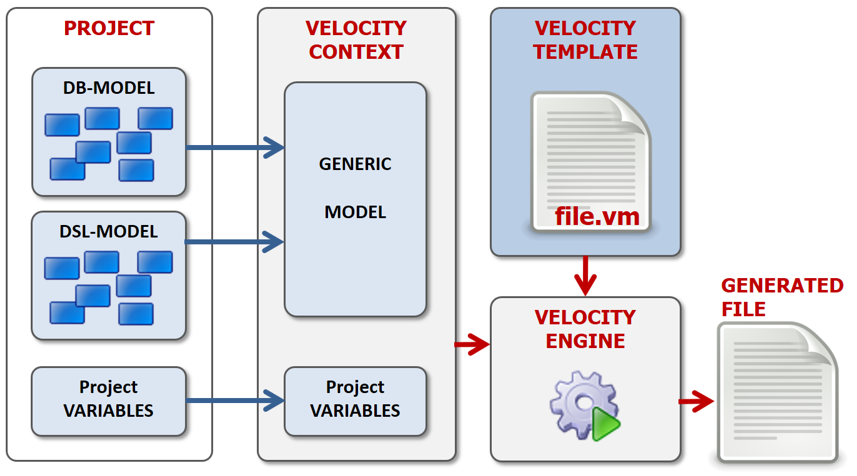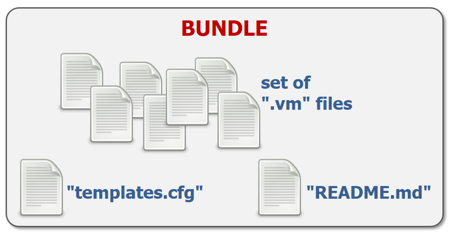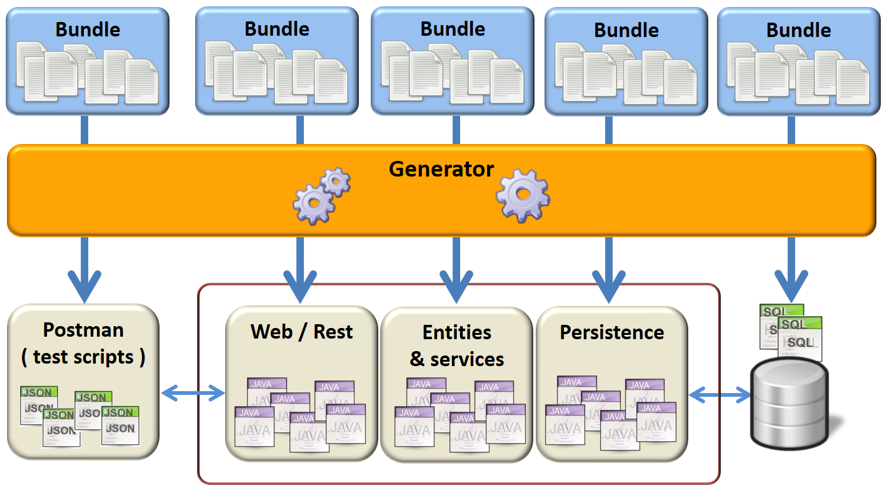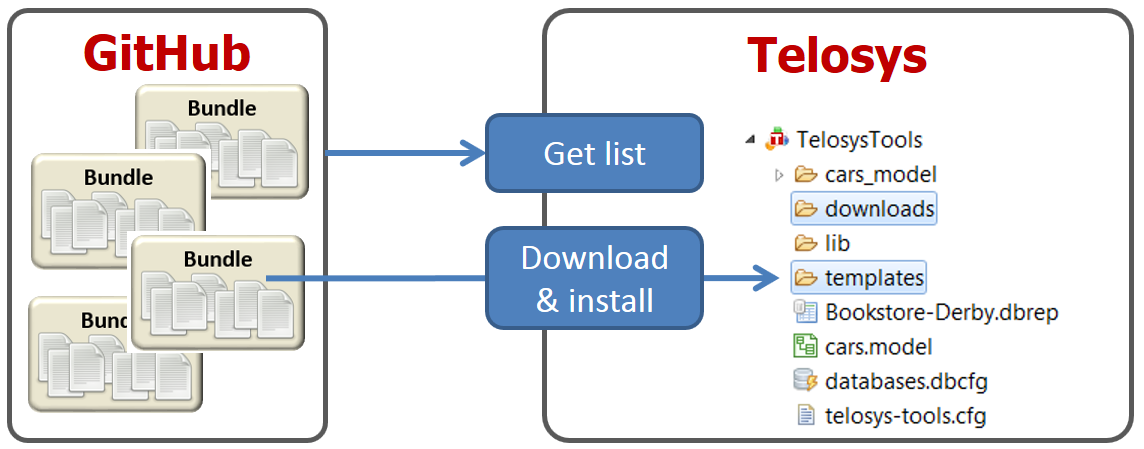Templates operating principle
The "Velocity context" contains all the objects usable in a template.
All the entities defined in the model and all the project variables are loaded as objects in the context.

In the template file the context objects are accessible using their symbolic name preceded by the character "$".
Very basic example :
#foreach( $attribute in $entity.attributes )
Do something with $attribute.name and $attribute.type
#end



